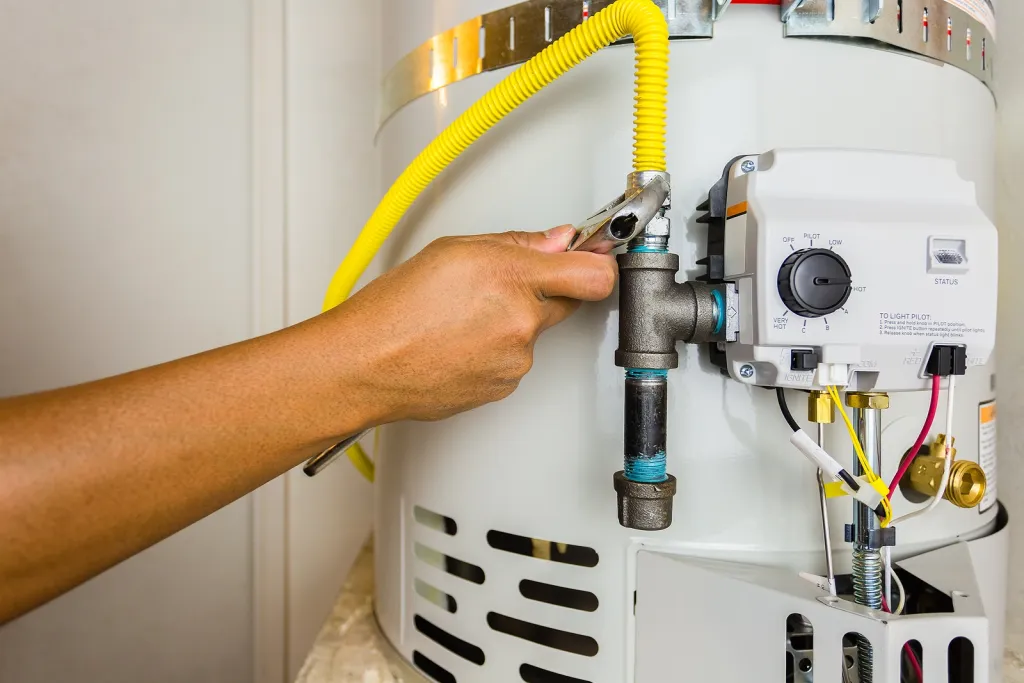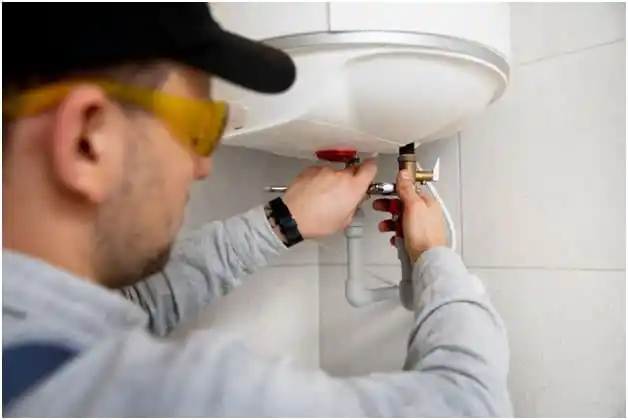
How to know your water heater needs a repair?
Giving a proper amount of time in inspection and maintenance of Water Heaters is a good practice. We want to protect ourselves from any misfortunate incident.
This Page can help you know more about hot water heater in Sacramento.
Knowing how to maintain water heater is necessary. Despite giving your best inspection, you may face small rectifiable issues, which may be a sign that you may need a water heater repair.
Lack of hot water
The lack of hot water is one of the earliest signs that can inform you about the situation. You may either run out of hot water within some time of usage or may not even have any hot water available in the first place. In case if this is the case, then look up for any issues in your water heater.
Strange Noises
Are you getting weird noises like Popping, Banging, Rumbling, or something similar? If yes, then you must check the electric water heater, as there may be some sediments getting piled up at the bottom of the tank. If these are left to pile up more, things can get even worse and may affect the efficiency of the electric hot water heater.
Leakage of Water
Water leakage is another notable issue that confirms the need for water heater service. There are multiple reasons for a leak. Some of them are sediments getting piled up, pressure-controlling valves getting old, faulty pressure valves, etc. Therefore, it is very important to inspect closely if any such leak is found.
Rusty Water
Rusty water is a state of water where water appears to have rust or has a taste of a metal-like substance. This can be a sign of corrosion taking place, which can lead to bigger problems in the future. Hence, it must be checked and resolved immediately.
The tank feels hot when touched.
Whenever water heaters are made, insulations are provided so that it is safe to touch. But when the tank is overheated, or insulation is damaged, you can feel that the tank is hot when touched. Overheating can happen due to human error, but mostly it happens because of the damage in the water tank. Moreover, if Insulation is damaged too, your water heater needs to be repaired.
Fluctuating water temperature
Sometimes, expected temperatures are not achieved while a heating session is going on. It happens only when the water heater has some issues. It is therefore expected to look into the matter closely and understand how to maintain water heater temperature.
Sometimes, we may face an emergency no matter how cautious we get. This link can help you know more about emergency plumbing.
Safety Measures
While discussing how to maintain water heater, safety is a big concern. The safety measures, if not taken properly, can lead to major issues, which even include serious injuries. Therefore, it is very important to take the necessary safety measures.
Ensuring Proper Installation
A proper installation of the water heater is necessary. You should make sure that every step mentioned in the instruction manual is followed.
Safe Storage
All the dangerous and hazardous substances that can cause explosions and compromise the safety must be kept far from the water tank heater. Knowing how to maintain water heater involves this important step.
Regular Maintenance
Schedule regular maintenance on your water heater, including flushing the tank to remove sediment and checking for corrosion or leaks. This can help prevent breakdowns and extend the life of the device.
Pressure Relief Valve
Timely check the Pressure Relief Valve and make sure it works properly. It is a very crucial safety device that releases excess pressure that gets built up inside the tank.
Carbon Monoxide Detectors
A gas water heater can leak carbon dioxide due to insufficient ventilation or improper installation. Carbon monoxide is odorless, tasteless, colorless, and extremely dangerous. It can cause poisoning or death. Install carbon monoxide detectors in your home so you know if it is there.
They can work especially near the water heater and other fuel-burning appliances to detect any leaks and warn us beforehand.
Instructions

Start with regular checkups.
Whether it is knowing how to maintain tankless water heater or how to maintain a gas hot water heater, keeping a regular inspection always keeps the overall check of the water heaters which can prevent any small issue from taking place which may lead to bigger problems. Here are some of the places to start from:
- Water leakage from the water heater’s lower parts. They are easily susceptible to water leaks, causing major problems
- Loose screws to repair or tighten. Sometimes, old valves have loose connections that need to be repaired.
- Corrosion of water pipes should be checked as well.
Flushing
It is a process in which the tank is flushed properly in order to get the sediment buildup out from your tank. By doing this, the overall life span of the tank is conserved, and the tank doesn’t face performance issues.
Pressure Checks
Periodic tests of pressure on the pressure relief valve must be done in order to check the proper functioning of the valve. It is also noted that if these tests give a result different from expected, there is a need to repair or replace the pressure pressure valve.
Adjust the Temperature Settings
The right temperature is very crucial for the working and lifespan of a water heater. If the temperature is set to around 120°F then you can save a lot of energy, however below it promotes bacterial growth. Similarly, If the temperature is set to around 140°F, more efficiency is obtained, which can help the heating process work better. But going above 140°F can result in overheating, which can lead to scalding.
Apply Proper Insulation
You can find water heater blankets at your local hardware store. They are used to enclose the tank and connect the pipes. Water heater insulation will save you money and time in the long run, especially if your water heater is located in a cold or draughty area, as insulation reduces the amount of heat lost through the tank.
Inspect the Ventilation System
If your water heater is in a small area, check to see if there’s enough airflow around it. It’s important to make sure the area is properly ventilated so you don’t let any flammable gas or carbon monoxide build-up.
These are some common instructions that you must follow in order to know how to maintain water heater.
When to Call a Pro
Sometimes, googling ‘hot water heater maintenance near me’ can be of great help. In case if you are stuck and unable to understand how to maintain water heater, contact a pro. In the same way, seek the opinion and advice of a plumber if you are unclear about how to interpret a problem (such as a strange noise). In order to save you money and effort over time, the majority of plumbers will bundle yearly inspections with routine maintenance tasks, including cleaning the tank.
It can be a good idea to have a professional inspection performed every three to four years if you know how to maintain water heater. Perform your own home inspections for some time, simply to be sure you aren’t overlooking anything. If you wish to seek professional help, our experts are available at the most optimum working times. Contact Us immediately.
No matter how it’s done, regular water heater maintenance is a must to prevent costly or hazardous issues in the future.
Steps on How to Maintain Water Heater
When we look for a step-by-step procedure on how to maintain water heater, it is hard to find since maintaining these is a simple yet time-consuming procedure. Nevertheless, we have carefully looked after all the possible ways how to maintain water heater and arranged it in a stepwise manner:
Step 1: Check the TPR Valve
One of the most important safety features of a Tank Water Heaters are Temperature and Pressure Relief Valve, also called a TPR valve. Whenever the tank faces the risk of excess temperature and pressure level, this valve regulates it back to safety levels by releasing water and steam from inside the water tank. This prevents explosions and other home disasters.
Here’s how we can check this valve
- Turn off the electricity and the valve that supplies cold water.
- Place a bucket under the pipe leading to the top or side of the tank’s TPR valve. If the tank pressure rises too high, this valve opens.
- Now lift the valve’s tap, which releases some water. Let it go.
- If the water still flows, empty the tank partially, use a pipe wrench to remove the old valve and replace it.
For any help in repiping, you can refer here to know more.
Step 2: Check the Anode Rod
Anode Rods are installed in metal tanks to increase their life span as they fight corrosion.
- Partially drain the tank using a hose.
- Using the appropriate tools, unscrew the Anode Rod and see whether it’s coated with Calcium or if it’s half inch thick.
- On finding the above condition, replace the rod.
Step 3: Drain the tank and wash out the sediment
- Drain the remaining water and then gradually add the cold water.
- Stir the sediment so it gradually dissolves in the cold water.
- Drain again and repeat this process until there is no sediment left and clean water comes out of the tank.
How to Flush a Water Heater
Flushing a water heater refers to the process of draining the tank to remove sediment, mineral buildup, and other debris that can accumulate over time. Sediment accumulation in the tank can reduce the water heater’s efficiency and lead to various problems, such as decreased heating performance, increased energy consumption, and potential damage to the tank. You must know this process if you really want to understand how to maintain water heater.
Here is a general guide on how to flush a water heater:
- Make sure your water heater is off before you begin. You may move on to the following stage when it’s off. If your water heater runs on gas, then make sure you shut off the gas at the source .
- Attach a regular garden hose to the drain water through the outlet located close to the base. The other end of the hose should be placed in a big bucket or next to a floor drain.
- Open the drain spout and let the water run until it runs clear to remove any sediment that has accumulated at the bottom of the heater.
In this way, we successfully flush the tank.

